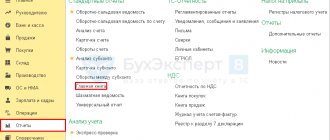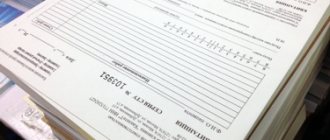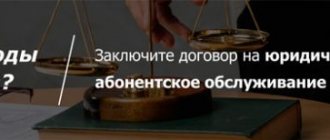What types of tax audits are there?
An individual entrepreneur is a business entity that is required to keep tax records. The entrepreneur reports information on income, expenses, contributions paid and advance payments in tax returns. The form of the report and the frequency of its submission depend on the applicable taxation system.
For example, an individual entrepreneur submits only one annual declaration on the simplified tax system, but must report on UTII every quarter. There are no declarations only in the patent taxation system, because the cost of the patent, i.e. the tax amount is known in advance.
Generate a simplified taxation system declaration online
During a desk audit, the Federal Tax Service Inspectorate checks each declaration received within three months after its submission. What is a desk tax audit? This is a study of the form and content of the declaration at the tax office itself, without special notification to the individual entrepreneur.
Create a UTII declaration
The inspector checks the correctness of filling out and also evaluates the accuracy of the specified data. If questions arise during the desk audit, the inspectorate will send the taxpayer a request to provide explanations or submit an updated declaration. Typically, a desk tax audit of an individual entrepreneur ends here, but if the explanations received do not satisfy the Federal Tax Service, then an act is drawn up and a decision is made on the results.
An on-site tax audit differs significantly from a desk audit. It is carried out on the basis not of one declaration, but for a certain period of activity of the individual entrepreneur - up to three years. The on-site inspection can last up to two months, with the possibility of extension up to four, and in exceptional cases - up to six months.
An on-site inspection of an individual entrepreneur by the tax inspectorate can be carried out at his place of residence, but access to residential premises is possible only with the consent of those living in them.
In practice, such an inspection is usually carried out not at the entrepreneur’s home, but in his office, store or other commercial premises. You can temporarily rent a room specifically for conducting an on-site inspection of an individual entrepreneur, where conditions have been created for the inspector.
If the entrepreneur cannot create the appropriate conditions, then an on-site inspection is carried out by the Federal Tax Service itself. To do this, you must submit all the necessary documents and materials to the inspection.
What information about individual entrepreneurs can be found using TIN
Any individual entrepreneur is required to register his company with the Federal Tax Service; the tax authority assigns the company an individual taxpayer code. For individual entrepreneurs, 12-digit numbers are assigned, and for legal entities, 10-digit numbers. The TIN of the individual and the merchant are the same. From the official extract from OGRNIP you can learn a lot of useful information about the organization:
- Registration number in the Unified Register of Entrepreneurs.
- The date of recording the entry and issuance of an extract on entry into the register.
- What type of business activity is an entrepreneur allowed to carry out?
- Does the individual entrepreneur apply the UTII taxation regime (this parameter is important for obtaining tax and other deductions).
- Number and address of the inspection unit to which the merchant is assigned.
Note! From the extract it is impossible to find out about the entrepreneur’s registered address, his telephone number, passport details and date of birth, since they relate to personal information that is protected by law.
Therefore, the best way to find out the status of the counterparty is to check the individual entrepreneur by TIN.
What information about individual entrepreneurs can be found using TIN
How often does the Federal Tax Service conduct inspections?
The report of the Federal Tax Service on the implementation of tax control carried out in 2021 provides the following figures:
- number of employees engaged in control and supervisory activities – 18.2 thousand;
- 62.8 million desk checks were carried out, of which 5.5 million required additional documents and information;
- the number of on-site inspections amounted to 9.3 thousand, of which only 985 inspections were carried out in relation to small businesses applying special regimes;
- on average, one on-site inspection brings 21 million rubles to the budget, which is 1.7 times more than in 2021;
- in total, based on the results of desk and field audits, taxpayers were accrued an additional 338.7 billion rubles;
- In addition to desk and on-site inspections, tax authorities carried out 76 thousand measures to monitor the use of cash register systems, as a result of which fines were assessed in the amount of 557 million rubles.
The tax authorities themselves say that the vector of control work has been shifted from mass on-site inspections to remote analysis of business activities.
The Federal Tax Service disclosed the criteria by which a taxpayer can be included in the on-site inspection plan back in 2007. By order of May 30, 2007 N MM-3-06 / [email protected] the corresponding Concept was approved.
IP inspections in 2021
Individual entrepreneur without checks - is this possible?
Until 2021, individual entrepreneurs were under strict government supervision, and the fines imposed on small and medium-sized businesses were practically no different from the fines for the largest enterprises. Of course, this could not continue without public outrage.
Recently, changes have begun in the system of individual entrepreneur inspections. First of all, in February 2021, the Ministry of Economic Development put forward for discussion a proposal to replace the first fine for individual entrepreneurs with a warning.
There is also already a moratorium on inspections of small and medium-sized businesses, which from January 2016 until the end of 2021 allowed most of the individual entrepreneurs to go on “inspection holidays.”
Most inspections are regulated by Federal Law No. 294.
The moratorium applied to all scheduled inspections of the Ministry of Labor, the Ministry of Natural Resources, the Prosecutor's Office and a number of other departments, which were previously carried out once every three years.
At the end of the year, legislators were concerned about extending its validity for another two years, adopting Law No. 480-FZ of December 25, 2018. Thus, small businesses and individual entrepreneurs received relief in the form of exemption from scheduled inspections for the period from January 1 2021 to December 31, 2021.
Risk-based approach or test yourself
The Federal Tax Service directly states that the possibility of not including on-site tax audits in the plan depends on the transparency of the business, the completeness of the calculation and payment of taxes to the budget.
The concept of the planning system for on-site tax audits is based on the following principles:
- two-way responsibility of taxpayers and tax authorities: the former must conscientiously fulfill their tax obligations, and the latter must reasonably select objects for inspection;
- conscientious taxpayers receive most favored nation treatment;
- the selection of an object for inspection is based on reliable signs of possible tax offenses;
- Punishment for violation of legislation on taxes and fees must be inevitable.
Tax authorities draw up on-site audit plans for internal use only; this is a confidential document. Taxpayers are not informed about the audit in advance; inspectors only have to present the relevant decision and official identification.
Free tax consultation
In total, the Federal Tax Service has established 12 main criteria that you need to analyze yourself and assess the risks of conducting an IRR for your business:
- The tax burden is below the average level for the industry or type of economic activity.
- For two or more years, the taxpayer reports losses.
- The average salary of employees is lower than the salary for this type of activity in the same subject of the Russian Federation.
- The taxpayer under special regimes has repeatedly approached the limits allowing their use. For example, the retail space on UTII is 149 square meters. meters or the number of employees on the simplified tax system - 99 people.
- IP on OSNO shows a high share of expenses in income received - more than 83%.
- Expenses are growing at a faster pace than the growth rate of income from the sale of goods, works, and services.
- The share of declared VAT deductions for a period of 12 months exceeds 89% of the amount of accrued tax.
- The taxpayer does not respond to the demands of the Federal Tax Service to provide explanations on desk audits of declarations.
- Business activities are based on entering into contracts with intermediaries without a reasonable business purpose.
- Frequent migration between tax offices, e.g. change of address, but this criterion applies mainly to organizations.
- The level of profitability deviates significantly from the average for this field of activity.
- The taxpayer does not exercise reasonable care when choosing partners, entering into relationships with unscrupulous counterparties.
In full, the risk criteria for conducting a GNP can be found here.
conclusions
- Tax audits of individual entrepreneurs can be of two types - office and on-site.
- A desk tax audit of individual entrepreneurs is carried out in relation to all submitted declarations, i.e. this is a mass phenomenon. In most cases, a desk audit does not have any unpleasant consequences; the entrepreneur is not even informed about its conduct.
- An on-site inspection of an individual entrepreneur by the tax inspectorate is rarely carried out, only if the Federal Tax Service Inspectorate has good reasons for this. This type of control almost always leads to significant additional tax charges and fines.
- To reduce the risk of conducting an on-site inspection, an entrepreneur needs to analyze his activities, guided by the Concept approved by order of the Federal Tax Service dated May 30, 2007 N MM-3-06/ [email protected]
- Checking individual entrepreneurs for the use of cash register technology does not apply to desk or field inspection. About 95% of such inspections reveal violations of the law, which leads to the imposition of administrative fines. Considering that from mid-2021, individual entrepreneurs using the simplified tax system for income will be able to work without declarations, the number of this type of checks will increase significantly.
Uninvited guests: why the tax office visits entrepreneurs
In tax plans, there is always a place for “ investors”
", and all because:
- It is impossible to completely exempt entrepreneurs from inspections, because they, along with legal entities, commit violations, which can only be “caught” with a personal visit from an inspector. “Criminal” schemes of individual entrepreneurs are in no way inferior to any others, and therefore, meetings with the inspector are inevitable.
- The inspector goes to the enterprise for only one purpose - additional tax assessment. And in this sense, working with individual entrepreneurs is sometimes easier than working with legal entities.
For example, “trioshniks” in a difficult situation can hide behind the “limitation” of their liability, and in order to get something more, tax officials will have to go to court. In matters with individual entrepreneurs, everything is different. Individual entrepreneurs are initially liable for the company’s debts with all their property, which means there is every chance of collecting additional accrued amounts in full if they sell some of the debtor’s property. Therefore, the consequences of the inspectors’ visit for individual entrepreneurs may be much more serious than for a legal entity.
Let's figure out exactly how the tax audit of individual entrepreneurs takes place.
Can you be held vicariously liable?
Take the 10-question quiz to find out about your situation. Based on the test results, you will find out what risk group you are in (critical, high, low), and in accordance with it you will receive recommendations on measures to protect against subsidiary liability
No. 1 How long has the counterparty been in debt to you?
No. 2 Is the existing debt confirmed by documents (agreements, acts, etc.)?
No. 3 Have you contacted the Debtor with a demand to repay the debt?
No. 4 Have you sent an official written complaint to the Debtor?
No. 5 Did the Debtor provide security for the fulfillment of obligations?
No. 6 Have you filed a claim with the Debtor in court?
No. 7 The procedure for collecting debt from a counterparty on your part is carried out by:
No. 8 Have enforcement proceedings been initiated against the counterparty at your request?
No. 9 Has bankruptcy proceedings been initiated against your Debtor?
No. 10 Does the Debtor currently operate, including through affiliated companies?
No. 11 Do you know the controlling persons of the Debtor, the ultimate owners of the business, as well as the property status of these persons?
Leave your email to receive the video “32 Debt Collection Strategies” and a detailed plan on how to deal with the debtor to get your money back.






